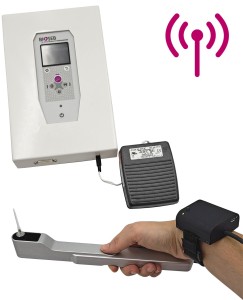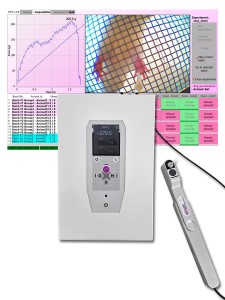Authors
C Duale, J Daveau, JM Cardot et al
Lab
Centre Hospitalier Universitaire (CHU) Clermont-Ferrand, Service d'Anesthesie-Reanimation, Hopital Gabriel-Montpied, France
Journal
Anesthesiology
Abstract
Background: Amitriptyline is effective in relieving neuropathic pain. Its site of action is thought to be supraspinal and spinal, but a peripheral effect on fibers is also suggested/
Methods This double-blind study examined the effects of transcutaneous amitriptyline diluted in hydroalcoholic solution in healthy young male volunteers. Six treatments were randomly applied on different areas of the skin of the back: amitriptyline at 0 (vehicle), 25, 50, and 100 mm; saline (control); and lidocaine-prilocaine cream as a positive control. Up to 24 h after application, mechanical thresholds for touch and nociception, and thermal thresholds for cold, warm, and heat sensation were recorded for each area. Blood samples were collected to assess plasma levels of amitriptyline. A late recording of the tactile thresholds was performed 1 and 3 weeks after the treatment session.
Results The thresholds for all sensations did not differ between the vehicle and saline. Lidocaine-prilocaine cream displayed a short-lasting anesthetic effect for all sensations, although this was not significant for warm sensation. Amitriptyline, at the three concentrations studied, induced a mild and short-lasting increase of the tactile and mechanical nociceptive thresholds. It significantly decreased cold thresholds (down to 21.8 degrees C, P = 0.01 vs. 27.5 degrees C for control) and heat thresholds (down to 40.1 degrees C, P = 0.004 vs. 43.4 degrees C for control). These two effects were no longer significant after the fourth hour of observation. Amitriptyline did not change warm thresholds. There was no apparent systemic absorption effect of the drug.
Conclusion It is hypothesized that amitriptyline has a differential effect on different fiber structures.
BIOSEB Instruments Used
Electronic Von Frey 4 (BIO-EVF4),Electronic Von Frey 5 with embedded camera (BIO-EVF5)
Source :
https://pubs.asahq.org/anesthesiology/article/108/4/714/8295/Cutaneous-Amitriptyline-in-Human

 Pain - Thermal Allodynia / Hyperalgesia
Pain - Thermal Allodynia / Hyperalgesia Pain - Spontaneous Pain - Postural Deficit
Pain - Spontaneous Pain - Postural Deficit Pain - Mechanical Allodynia / Hyperalgesia
Pain - Mechanical Allodynia / Hyperalgesia Learning/Memory - Attention - Addiction
Learning/Memory - Attention - Addiction Physiology & Respiratory Research
Physiology & Respiratory Research











![Dynamic Weight Bearing 2.0 – Postural Module [Add-on]](https://bioseb.com/733-home_default/dynamic-weight-bearing-20-add-on-postural-module.jpg)
























 Pain
Pain Central Nervous System (CNS)
Central Nervous System (CNS) Neurodegeneration
Neurodegeneration Sensory system
Sensory system Motor control
Motor control Mood Disorders
Mood Disorders Other disorders
Other disorders Muscular system
Muscular system Joints
Joints Metabolism
Metabolism Cross-disciplinary subjects
Cross-disciplinary subjects CONFERENCES & MEETINGS
CONFERENCES & MEETINGS 
